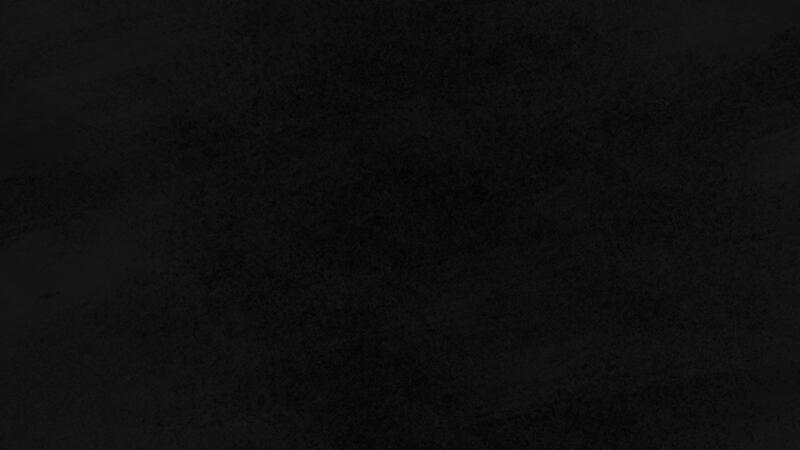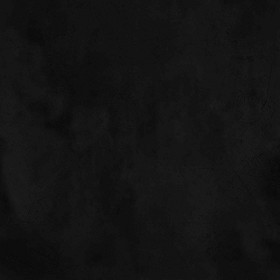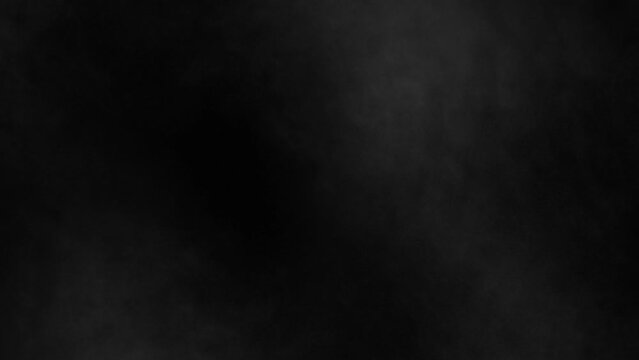Protecting our natural places, the sprawling forests and the quiet woodlands, is a job for everyone, really. It is about keeping our wild spaces safe from the destructive force of unwanted blazes, a task that, you know, calls for constant care and a good bit of thought from all of us who enjoy them. When fire takes hold, it can sweep through an area with such speed, leaving behind a trail of devastation that takes a very long time to heal, impacting the trees, the animals, and even the air we breathe. So, understanding how to keep these fires from starting is, in a way, a truly big part of caring for our planet and the beautiful things on it.
For generations, one particular figure has stood as a gentle, yet strong, reminder of this very important work. He is a character known across the country, a friendly face that brings to mind the simple, powerful idea of being careful outdoors. This enduring symbol has, quite literally, helped shape how we think about protecting our forests and wild areas from accidental fires, making the idea of prevention something that feels like a shared responsibility for each person. He is, to put it mildly, a true icon of public service, his image bringing to mind a sense of duty to the natural world.
Now, when we talk about this well-known figure, it is worth a moment to consider his name, which is, you know, a proper noun. The character we are thinking of, the one associated with the U.S. Forest Service and its message of keeping our wildlands safe, is always referred to as "Smokey" Bear. This is distinct from the general word "smoky," which describes something that has a lot of smoke or smells of it, like a campfire after it has been put out. The specific spelling of his name, with that extra 'e', marks him as a unique individual, a cultural landmark in the ongoing effort for wildfire prevention, and a constant voice for being watchful in our great outdoors.
- Robert Paul Schoonover
- Gloria Torres Only Fans
- Ashiah Sofey Naked
- Honey Toons Teach Me First
- Liza Victoria Huber
Table of Contents
- Smokey Bear - A Cultural Icon
- The Origin Story of Smokey Bear
- Smokey Bear - Personal Details and Bio Data
- How Does Smokey Bear Help in Wildfire Prevention?
- The Power of a Simple Message for Smokey Bear Wildfire Prevention
- What Makes Smokey Bear Still Relevant for Wildfire Prevention?
- Can We Still Learn from Smokey Bear for Modern Wildfire Prevention?
- Lessons from Smokey Bear for Everyday Wildfire Prevention
Smokey Bear - A Cultural Icon
There are very few advertising figures that have stayed with us for as long as Smokey Bear, and actually, even fewer that have had such a lasting positive effect on public habits. He is, you know, more than just a cartoon character; he is a symbol, a friendly reminder that has, for many decades, represented the shared goal of keeping our forests safe from fire. His presence is felt in all sorts of places, from public service announcements on television to posters in park visitor centers, making his message about wildfire prevention something that feels very much a part of our common understanding. He is, in some respects, a true cornerstone of how we approach outdoor safety, his image almost instantly recognizable to nearly everyone, young and old, across the country.
The enduring popularity of Smokey Bear speaks volumes about the effectiveness of his simple yet powerful message. It is a message that does not rely on complicated ideas or frightening images, but rather on a straightforward call for personal responsibility. His gentle, yet firm, voice, often heard saying his famous line, has, as a matter of fact, instilled a sense of duty in countless individuals. This means that when people see Smokey, they usually think about taking extra care with campfires, being mindful of discarded cigarettes, or just generally being more aware of potential fire hazards when they are out in nature. He has, in a way, become a part of the fabric of our outdoor culture, reminding us that every single person has a part to play in keeping our wildlands from burning.
The Origin Story of Smokey Bear
The story of Smokey Bear begins during a time when the need for wildfire prevention was becoming very, very clear. During World War II, there was a real concern that enemy attacks could, for example, start devastating forest fires in the United States, which would, in turn, pull valuable resources away from the war effort. The U.S. Forest Service, along with the War Advertising Council, decided that a strong, memorable symbol was needed to encourage Americans to be careful with fire. So, in 1944, the character of Smokey Bear was created, with his first poster showing him pouring a bucket of water on a campfire, a truly direct and understandable image for the time.
- Vanna Einerson Fapello
- Daniel Harrelson
- Conan Obrien Siblings
- Chatgpt Plus Iran Payment Method
- Pathivara Temple Tourist Attractions
The idea for a bear as the mascot was, apparently, inspired by a real-life incident. In 1950, a small bear cub was found clinging to a charred tree after a devastating fire in the Capitan Mountains of New Mexico. This little cub, who was given the name Smokey, survived his injuries and became a living symbol of the campaign. He was, you know, brought to the National Zoo in Washington, D.C., where he lived for many years, acting as a very real, tangible reminder of the dangers of wildfires and the importance of preventing them. This actual bear helped to solidify the image and the message of the cartoon character, giving the campaign a kind of heartfelt depth that really connected with people across the nation, making the message of wildfire prevention all the more poignant.
Smokey Bear - Personal Details and Bio Data
While Smokey Bear is, in essence, a fictional character, his impact has been very real, and his story has some pretty distinct details that are worth noting. He is, after all, a mascot with a specific purpose and a long history, which has, you know, shaped his identity over the years. His creation was a carefully planned effort to deliver a vital message, and the characteristics given to him were chosen to make him relatable and trustworthy. Here are some of the defining aspects of this enduring symbol, a sort of "bio data" for a character who has, quite literally, become a household name in the world of public safety and wildfire prevention.
| Official Debut Date | August 9, 1944 |
| Creator Agencies | U.S. Forest Service, War Advertising Council (now Ad Council) |
| Original Artist | Albert Staehle (first poster) |
| Species | American Black Bear (anthropomorphic) |
| Primary Message | "Only YOU Can Prevent Wildfires" (originally "Only YOU Can Prevent Forest Fires") |
| Trademark Status | Protected by federal law (Smokey Bear Act of 1952) |
| Living Symbol | A real bear cub named Smokey, rescued in 1950, lived at the National Zoo |
| Voice Actors (various) | Jackson Weaver (most recognized), Sam Elliott, Jack Angel, etc. |
How Does Smokey Bear Help in Wildfire Prevention?
Smokey Bear helps in wildfire prevention primarily by, you know, being a consistent and recognizable voice for caution. His role is to educate the public, to plant the seed of awareness in people's minds about the dangers of careless actions in wild areas. He does this through a very straightforward approach, using simple language and memorable images that stick with you. The core of his message is about personal responsibility, which is, in fact, a powerful concept. He does not blame, but rather empowers individuals to take action, suggesting that each person has the ability to make a real difference in protecting our forests from accidental fires. This kind of direct appeal makes his message incredibly effective for getting people to think about wildfire prevention.
His message is spread through a variety of channels, reaching people where they are, whether that is, for instance, on television, through radio spots, or on posters seen at parks and campsites. The consistent repetition of his simple phrase, "Only YOU Can Prevent Wildfires," has, over the decades, deeply ingrained itself in the collective consciousness. This means that when people are out in nature, perhaps lighting a campfire or disposing of a cigarette, the image of Smokey Bear and his words often come to mind, prompting them to be more careful. It is, to be honest, a very effective way to foster a culture of vigilance and care, making the idea of responsible outdoor behavior something that feels very natural and important for everyone who enjoys our wild spaces, thereby significantly contributing to wildfire prevention efforts.
The Power of a Simple Message for Smokey Bear Wildfire Prevention
The true genius of the Smokey Bear campaign lies in the sheer simplicity of its central message. "Only YOU Can Prevent Wildfires" is, quite frankly, a phrase that is easy to remember, easy to understand, and very hard to argue with. It cuts through any possible confusion and places the responsibility directly on the individual, which is, you know, a remarkably effective way to encourage behavioral change. This straightforward approach means that people do not need to be experts in forestry or fire science to grasp the core idea; they just need to understand that their actions have consequences in the natural world. This direct appeal to personal agency has been a cornerstone of successful wildfire prevention for generations, making the message accessible to everyone.
This simple message also works because it fosters a sense of personal ownership over the problem. Instead of feeling like wildfire prevention is a job for government agencies alone, Smokey Bear makes it clear that everyone has a part to play. This shared responsibility creates a stronger, more widespread effort to protect our forests. It is, like, a collective understanding that each small act of caution, each decision to properly extinguish a campfire or to be careful with sparks, adds up to a much larger impact. The power of this message is that it turns a complex problem into a series of manageable, individual actions, making the goal of preventing wildfires seem achievable through the collective efforts of many, all guided by the gentle reminder of Smokey Bear.
What Makes Smokey Bear Still Relevant for Wildfire Prevention?
You might wonder, with all the new ways we have to communicate and all the changes in our world, why Smokey Bear still holds such a special place in the discussion around wildfire prevention. Well, the truth is, his message remains incredibly relevant because the fundamental causes of many wildfires have not really changed all that much. A large number of fires are still started by human activity, whether it is from unattended campfires, carelessly discarded smoking materials, equipment malfunctions, or even debris burning that gets out of control. So, in that sense, the need for human caution is as strong as it ever was, and Smokey's direct appeal to that caution is, basically, timeless.
Furthermore, Smokey Bear's image has a kind of nostalgic appeal that helps his message cut through the noise of modern advertising. People remember him from their childhoods, and that familiarity creates a sense of trust and warmth. This means that when his message appears, it is often received with an open mind, rather than being dismissed as just another advertisement. He is, to be honest, a comforting presence, a reminder of simpler times when public service messages were often delivered by straightforward, friendly characters. This enduring connection across generations ensures that his voice continues to be heard, making him a truly effective and lasting advocate for sensible habits in our wild spaces, which is, you know, central to wildfire prevention.
Can We Still Learn from Smokey Bear for Modern Wildfire Prevention?
Absolutely, we can still learn a great deal from Smokey Bear, even as we face new challenges in wildfire prevention. His enduring appeal teaches us that simplicity and consistency are, like, very powerful tools in public education. In an age where information can be overwhelming and often complex, Smokey's straightforward call to action stands out. It reminds us that sometimes, the most effective way to get a message across is to make it clear, concise, and easy for everyone to understand, regardless of their background or how much they already know about the topic. This lesson in communication strategy is, in a way, just as relevant today as it was decades ago, perhaps even more so.
Moreover, Smokey Bear's success highlights the importance of fostering a sense of personal responsibility. While large-scale efforts and advanced technologies are certainly crucial for managing wildfires, the initial spark often comes down to individual actions. Smokey's message empowers each person to be a part of the solution, rather than just a passive observer. This emphasis on individual agency is, you know, a vital component of any successful prevention strategy, because it recognizes that human behavior is often the key factor in preventing unwanted fires. So, yes, his principles of direct communication and personal accountability continue to offer valuable insights for modern wildfire prevention efforts, helping us to think about our role in protecting our environment.
Lessons from Smokey Bear for Everyday Wildfire Prevention
The lessons from Smokey Bear are, really, not just for those who spend a lot of time deep in the forest; they are for everyone, every single day. His message about wildfire prevention extends to our backyards, our local parks, and any place where human activity could potentially start a fire. It is about being mindful of the small things that can have very big consequences. For example, making sure that outdoor fires are completely out and cold to the touch before you leave them, or being careful with sparks from machinery, or even just properly disposing of smoking materials, are all actions that reflect Smokey's core teaching. These are, you know, everyday habits that can collectively make a huge difference in keeping our communities and natural areas safe.
Another key lesson is the idea of constant vigilance. Wildfire risk can change rapidly with weather conditions, like strong winds or periods of drought. Smokey Bear's enduring presence reminds us that prevention is not a one-time act, but an ongoing commitment. It means staying informed about local fire danger levels, understanding burn bans, and adjusting our behavior accordingly. This continuous awareness is, as a matter of fact, a powerful tool in itself. By adopting these simple, yet profoundly important, habits into our daily routines, we can all contribute to a safer environment, acting as responsible stewards of the land, just as Smokey Bear has always encouraged us to do for effective wildfire prevention.
This article has explored the enduring legacy of Smokey Bear, delving into his unique status as a proper noun distinct from the general adjective "smoky," and tracing his origins as a vital cultural icon for wildfire prevention. We have looked at his historical creation during a time of national concern and considered the biographical details of this beloved mascot. The discussion has also covered how his simple, consistent message of personal responsibility has effectively educated the public for decades, making him a powerful force in encouraging safe outdoor practices. Finally, we examined why Smokey Bear remains remarkably relevant in today's world and what valuable lessons his campaign continues to offer for both widespread and individual efforts in preventing wildfires.
- Pathivara Temple Trekking Duration
- Dion Phaneuf Wife
- Connie Francis Current Health
- Mona Azar Age
- Buy Chatgpt Plus Iran Payment Method



